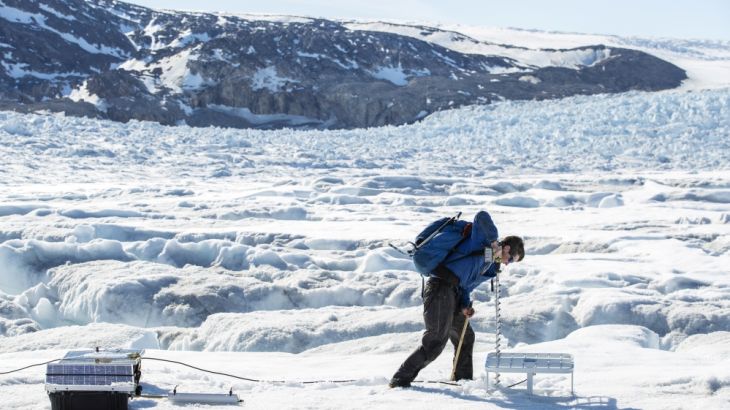
Climate Hackers
As the world faces an existential crisis due to climate change, can science devise feasible solutions to global warming?
In October 2018, the United Nations‘ Intergovernmental Panel on Climate Change (IPCC) issued a shocking warning that we have just 12 years to avoid climate catastrophe.
But is it already too late?
Keep reading
list of 4 itemsAfter the Hurricane
World’s coral reefs face global bleaching crisis
Why is Germany maintaining economic ties with China?
For Professor Jason Box, a Copenhagen-based ice climatologist and former lead author for the organisation, humanity’s predicament is now almost beyond repair.
When we lose the reflective cover of the arctic sea ice, when we lose the Greenland ice sheet, the climate system globally unravels. And it's going to create the kind of problems that will make it pretty hard to govern society: the migrations, the droughts. So what's at risk here is practically civilisation.
“When we lose the reflective cover of the arctic sea ice, when we lose the Greenland ice sheet, the climate system globally unravels. And it’s going to create the kind of problems that will make it pretty hard to govern society: the migrations, the droughts,” he says.
“What’s at risk here is practically civilisation.”
The obvious initiatives, such as energy conservation, adopting alternatives to fossil fuels and agreeing and then enforcing limits on carbon emissions – which governments are notoriously bad at doing – may not be enough on their own to make any appreciable difference to rising temperatures that are out of control.
Some scientists and policymakers believe that more dramatic and immediate action is now necessary, that the planet itself will have to be hacked through a process known as geoengineering – deliberate large-scale intervention in the Earth’s natural systems – in order to counteract climate change.
“For better or for worse, geoengineering will have to be part of the mix going forward,” Box says.
There are many theories about how this could be done, though the most as yet remain unrealised.
A Swiss company, Climeworks, is developing a solution that involves building giant fans that draw in air and bind carbon molecules into filters.
At Harvard University, a team of scientists are hoping to mirror the cooling effects of volcano eruptions by using sulphur particles to disperse the sun’s rays. Other proposals include sprinkling iron filings into the seas to encourage carbon-eating plankton, or sending armadas of ships to pump sea mist into the sky to diffuse the sun’s power.
All these and more are on the drawing board, but whether they will work – and who will pay for them – is open to question.
In this film, reporter Eric Campbell asks whether science and technology can provide a solution to the existential threat posed by global warming or whether these efforts will merely give us yet more excuses to keep burning the planet to a cinder.